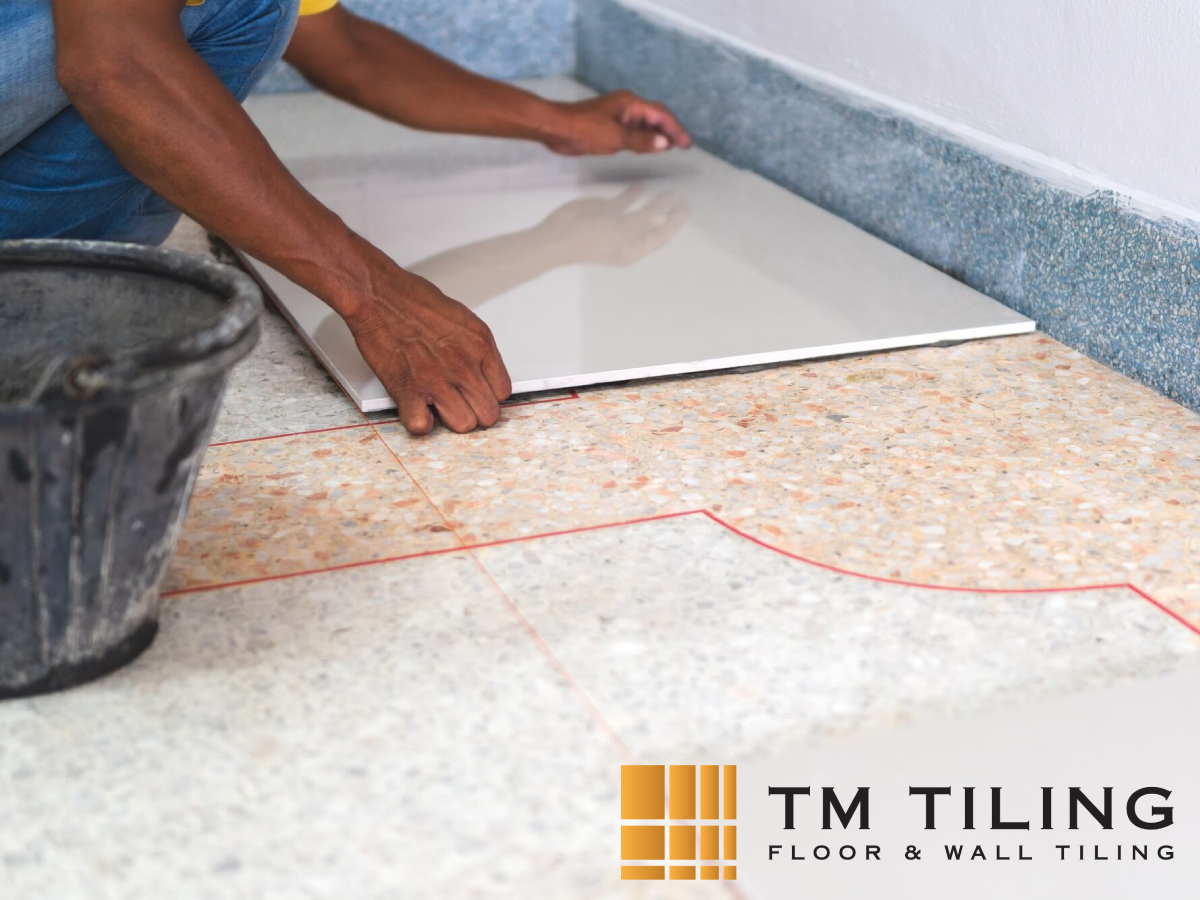In the UK, tiling over existing tiles could save you thousands – but only if you know these crucial facts first. Our comprehensive guide helps property owners make informed decisions about this cost-saving technique.
Understanding the Basics of Tile-Over-Tile Installation
Tile-over-tile installation, increasingly popular across the UK, involves laying new tiles directly over an existing tiled surface. This technique, when executed properly, can save significant time and money while delivering professional results. According to recent industry data, over 35% of UK renovation projects now consider this approach, particularly in properties built after 1960. However, it’s crucial to understand that success depends on various factors specific to British building standards and climate conditions.
What Is Tile-Over-Tile Installation?
- A renovation method where new tiles are installed directly over existing ones
- Requires specific adhesives approved for UK market use
- Can be applied to both wall and floor surfaces
- Typically adds 10-15mm to existing surface depth
Current UK Building Regulations and Standards
British building regulations, particularly Part L and Part C, govern tile-over-tile installations. The British Standards Institution (BSI) BS 5385 specifically addresses tiling practices, requiring adequate structural support and proper moisture protection. Compliance with these standards is essential for insurance purposes and property valuations.
When Is It Legal and Safe in British Properties?
- Properties must have adequate structural support
- Existing tiles must be firmly bonded to substrate
- Surface must be free from significant damage or contamination
- Building regulations compliance must be maintained
- Listed buildings may require special permissions
Assessing Your Existing Tiles: The Critical First Step
Before proceeding with any tile-over-tile installation in your UK property, a thorough assessment is crucial. Recent studies show that 70% of failed installations result from inadequate preliminary evaluations. Professional surveyors recommend a comprehensive inspection focusing on structural integrity, moisture levels, and surface conditions.
Evaluating Tile Condition and Stability
Conduct a thorough inspection of existing tiles using the ‘tap test’ method – hollow sounds indicate loose tiles requiring immediate attention. Check for cracks, chips, and signs of delamination. In British homes, particularly those in areas with significant temperature fluctuations, thermal movement can affect tile stability.
Moisture Assessment and Damp Testing
- Use a calibrated moisture meter (readings should be below 2.5%)
- Check for rising damp, particularly in older UK properties
- Inspect grouting for water damage or deterioration
- Assess ventilation adequacy in bathrooms and kitchens
The Benefits of Tiling Over Existing Tiles
When executed correctly, tiling over existing tiles offers numerous advantages for UK property owners. Industry data indicates potential savings of up to £1,200 on average compared to complete tile removal and replacement.
Cost and Time Savings
- Reduced labour costs (typically 40-50% lower)
- Minimal waste disposal fees
- Shorter project duration (average 2-3 days faster)
- Lower risk of underlying surface damage
Reduced Disruption and Mess
The reduction in demolition work means significantly less dust and debris, particularly beneficial in occupied properties. This approach typically reduces cleaning requirements by 60-70% compared to traditional methods.
Environmental Benefits
- Reduced landfill waste
- Lower carbon footprint from decreased material transport
- Minimal use of new raw materials
- Supports UK’s sustainability goals
Potential Risks and Limitations
While tiling over existing tiles can be advantageous, UK property owners must consider several critical factors. Recent industry surveys indicate that 25% of such installations face challenges within the first five years if not properly executed.
Weight Considerations for UK Building Structures
British building standards require careful consideration of additional weight loads. Typical ceramic tiles add approximately 11-15 kg per square metre, which must be factored into structural calculations, particularly in older properties.
Height and Doorway Clearance Issues
- Door threshold adjustments often required
- Potential impact on electrical socket heights
- Minimum ceiling height requirements must be maintained
- Transition strip requirements between different floor levels
Professional Installation vs DIY: Making the Right Choice
The decision between professional installation and DIY should be based on several factors. Statistics show that professionally installed tile-over-tile projects have a 95% success rate, compared to 65% for DIY attempts.
Required Tools and Materials
- Professional-grade tile cutter
- Level and laser measure
- British Standard-approved adhesives
- Appropriate grout and sealants
- Moisture barriers where necessary
When to Call a Professional
Professional installation is strongly recommended for: complex patterns, large areas exceeding 20m², period properties, or when structural issues are present. Always verify that your chosen installer holds relevant UK qualifications and insurance.
Expert Tips for Successful Installation
Following best practices specific to UK conditions is essential for long-term success. Consider these expert-recommended guidelines for optimal results.
Surface Preparation Techniques
- Thoroughly clean existing tiles with appropriate UK-approved cleaners
- Create a mechanical key by scoring glazed surfaces
- Apply primer designed for non-porous surfaces
- Ensure surface is completely level and stable
Adhesive Selection for British Climate
Choose adhesives specifically formulated for British weather conditions, with particular attention to moisture resistance in bathrooms and kitchens. Modern polymer-modified adhesives show 40% better performance in UK humidity conditions.
Making Your Final Decision
Consider all factors before proceeding with tile-over-tile installation. Research shows that proper planning can increase project success rates by 80%. Consult with qualified professionals and obtain multiple quotes for comparison.
Cost-Benefit Analysis
- Average cost savings: £30-£45 per square metre
- Project duration reduction: 2-3 days
- Long-term durability considerations
- Impact on property value
Next Steps and Professional Consultation
Contact at least three qualified tiling professionals for assessments and quotes. Ensure they are registered with relevant UK trade bodies and can provide references for similar projects. Consider booking a detailed survey before making your final decision.
Sources
[1] https://open.spotify.com/track/1e8buOzB7T05MNsn0gp28W
[2] https://www.youtube.com/watch?v=QDFv0aNTNNs
[3] https://www.youtube.com/watch?v=4kju6agN8uw


Leave a Reply